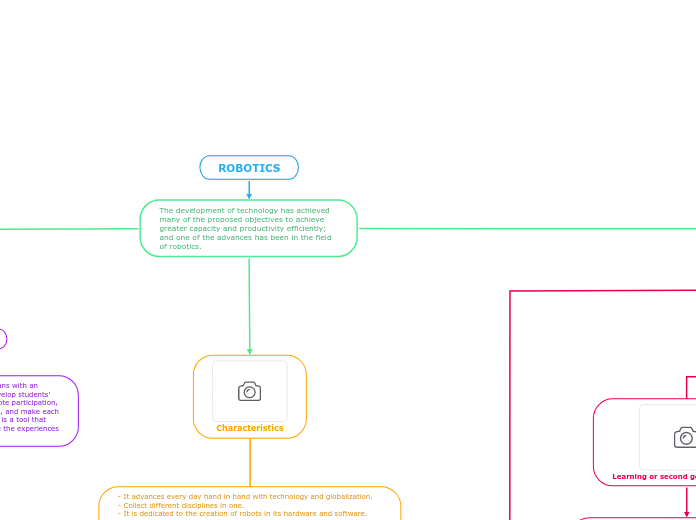ROBOTICS
The development of technology has achieved many of the proposed objectives to achieve greater capacity and productivity efficiently; and one of the advances has been in the field of robotics.

Overall performance of robotics
Education
Educational robotics develops plans with an eminently practical nature to develop students' motor and cognitive skills, promote participation, curiosity and interest in research, and make each didactic unit a fun experience. It is a tool that educators can rely on to improve the experiences of their students.
Energy
They are mainly used in automated and remote maintenance tasks, infrastructure inspection, and in segments such as power transmission and distribution. One of the great incorporations has been the use of drones to maintain and repair infrastructures that are difficult to access, for example, in wind farms on land and at sea.
Automotive sector
Japanese automotive companies such as Toyota, Honda or Mitsubishi, among others, have promoted innovation in machinery since the 1970s, and as a consequence in robotics.
Medicine

Characteristics
- It advances every day hand in hand with technology and globalization.
- Collect different disciplines in one.
- It is dedicated to the creation of robots in its hardware and software.
- There are laws that regulate it.
- Its daily use is advancing more and more.
- Robots are born to perform specific functions.
Evolution and main uses
Broadly speaking, two criteria are usually considered to classify the types of robots. One based on the historical moment in which they were created (generations) and another in relation to their shape, according to their structure and operation. Let's look at each one in detail.

Intelligent or fourth generation robots
The models of this generation learn directly from the environment that surrounds them by applying fuzzy logic procedures, which are used when the complexity of the process in question is too high and precise mathematical models do not exist today. In addition, these robots also include artificial neural networks and complex data collection and analysis methods that dramatically improve their overall real-time performance. In this way, intelligent robots, which have been developed especially since the early years of the 21st century, present improvements that make them much more developed than their predecessors.

5G or fifth generation robots
Closely related to the development and application of artificial intelligence, fifth generation robots are those currently being worked on, thus representing the latest advances in robotics. This new range of robots must base its action and development fundamentally on established behavioral models, also taking advantage of the innumerable opportunities offered today by the independence of cables.

Robots with sensorized or third generation control
The third generation is that of the so-called robots with sensorized control. These are, essentially, computers that execute orders from a program and send them to the manipulator so that he can carry out the necessary movements, overcoming the challenges of his environment to accomplish a task. Thus, with the third generation of robots, the era of intelligent robots begins to emerge and programming languages that allow the development of their control systems begin to emerge, which use a closed-loop strategy. This moment in the history of robotics can be located between the 1980s and the 1990s.

Learning or second generation robots
These robots have a feedback system with which they obtain more information about their environment and store it in storage systems, along with their instructions. Likewise, this information acquired from the environment is also limited and they tend to be considerably larger in size. In addition, they are also robots controlled by numerical sequence and are often used above all in the automotive industry. On the other hand, regarding its chronology, it is usually pointed out that the historical period of second generation robots even includes up to the 1980s.

Handling or first generation robots
The first generation robots are used above all to move objects, presenting multiple limitations in the number of movements that they can carry out. Its purpose is mainly the repetition of scheduled tasks, such as going from one place to another. In relation to its historical moment, it is usually considered that the boom in first-generation robots began in the 1950s.
